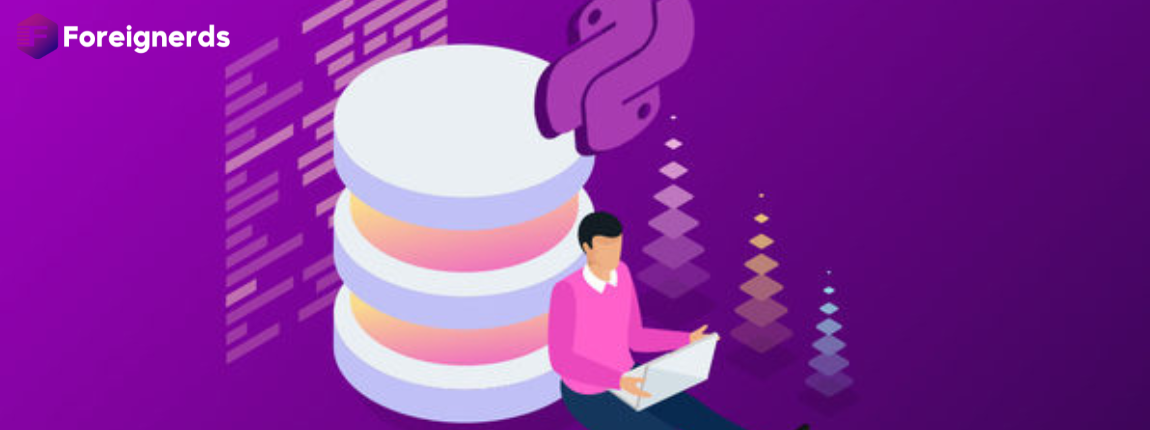- Home
- Website Development & Designing
- A Brief History of Django: From...

In the ever-evolving landscape of software development, frameworks have revolutionized the way developers create applications. These frameworks, tailored to specific programming languages, platforms, and functionalities, have streamlined the development process. Python, a versatile programming language, boasts a plethora of frameworks, including Flask, Cherrypy, Web2py, and Django.
In this article, we delve into the captivating history of Django, the most celebrated Python framework.
Django, a household name among Python frameworks, stands as a testament to the power of open source software. This versatile framework adheres to the Model-View-Controller (MVC) architecture, a tried-and-true approach to web application development. What sets Django apart is its non-modular architecture, reusability, and pluggable environment, all of which foster rapid development.
One of Django’s guiding principles is the DRY (Don’t Repeat Yourself) philosophy, which empowers developers to write concise, efficient code, saving precious time. Like any comprehensive framework, Django offers fundamental CRUD (Create, Read, Update, Delete) operations and a user-friendly admin panel, simplifying the task of application administration. Django’s overarching philosophy revolves around enabling developers to swiftly create intricate projects while maintaining code integrity.
The inception of Django dates back to 2003 when Simon Willison and Adrian Holovaty, both working for the Lawrence Journal-World newspaper, faced the daunting task of implementing new website features and entire applications on tight deadlines. Python emerged as their language of choice due to its versatility and readability. To meet the demands of rapid development while ensuring code maintainability, Django was born.
In July 2005, Django was released as an open-source framework, subsequently earning its moniker from the legendary jazz guitarist Django Reinhardt. By then, Django had matured enough to handle high-traffic websites efficiently. In 2008, the Django Software Foundation was established to oversee and maintain the framework.
Today, Django stands as a thriving open-source project, attracting contributors, users, and developers from across the globe. Continuous improvements, new features, and bug fixes ensure that Django remains true to its original purpose: facilitating the development of maintainable, reusable, and clean web applications. The most recent stable version of the framework is Django 3.2.
Django’s robust feature set plays a pivotal role in supporting application development, making it an ideal choice for developers aiming for maintainability and reusability. Some of Django’s standout features include:
Django’s “Contrib” package bundles various applications with the framework’s core distribution. These applications encompass:
These bundled applications empower web developers to expedite application development by harnessing the reusability they offer.
While Django employs its nomenclature for callable objects and HTTP response views, at its core, it adheres to the MVC architecture. This includes an Object-Relational Mapper (ORM) that bridges the gap between relational databases (Models) and data models (Python classes). Other essential components encompass a system for processing HTTP requests, a web templating system (View), and a Controller (a regex-based URL dispatcher). The core framework also incorporates:
Django boasts versatility in terms of server compatibility. It can run on Nginx and Apache using Gunicorn, Cherokee, or WSGI with the Python module Flup. Additionally, Django supports FastCGI servers, allowing developers to deploy it behind any FastCGI-supported server, such as Hiawatha or Lighttpd. The framework seamlessly integrates with popular database backends like MySQL, SQLite, Oracle, and PostgreSQL. Even Microsoft SQL Server can be used in conjunction with Django-mssql.
Django’s configuration systems facilitate the integration of third-party code into projects, provided it adheres to reusability conventions. With over 2500 packages available, developers can extend Django’s core functionality to address a wide array of challenges, including search, API provisioning, registration, and consumption.
However, it’s worth noting that extensibility can be constrained by dependencies on the framework’s internal components. While Django promotes loose coupling, certain tags and template filters assume the use of a specific engine. Both the bundled admin and authentication applications rely on the internal Object-Relational Mapper. While not obligatory, these components encourage developers to continue using Django’s official stack for maximum benefit from the application ecosystem.
Django’s journey has been enriched by vibrant and active communities that have sprung up around the framework. A notable highlight is the semi-annual conference known as “DjangoCon,” which has been a staple since September 2008. These conferences take place annually in Europe (in May or June) and the United States (around August or September), attracting attendees from various states and countries.
Since its inception in 2003, Django has fostered meetups and user groups worldwide. Among them, “Django Girls” originated in Poland, gaining significant recognition. Django communities have thrived in other regions as well, including Australia with “PyCon AU” and India. Django IRC channels and a substantial presence on StackOverflow further cement the framework’s strong community support. These communities actively contribute to patching and plugin development, ensuring Django’s continuous evolution as an open-source project.
The landscape of software development has undergone a profound transformation with the advent of open-source frameworks. Django, born in 2003, has emerged as a formidable web application development framework grounded in Python. It champions code reusability, clean coding practices, and streamlined code management. Since its inception, django simple history has cultivated a global community of developers, making it one of the most prominent web development frameworks, rivaled only by JavaScript. As the world continues to demand robust applications, Django’s influence is poised to grow even further, securing its place as a cornerstone of modern web development.
© 2013 - 2025 Foreignerds. All Rights Reserved